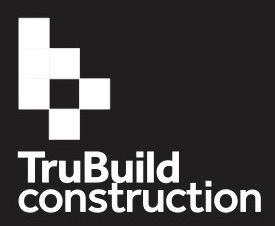The Changing Housing Needs of Baby Boomers
In recent years, there has been a lot of discussion about concerns for future housing options of those in the baby boomer generation.
Baby boomers are those born between 1946-1964 of which, ten thousand turn 65 every day.
It has been predicted by the Census Bureau that by 2030, when the youngest of the baby boomers reach age 65, 20% of the US population will be age 65 or older.
This number will be up from 12% in 2012. With the increasing percentage of older adults increasing everyday, the needs of this generation are beginning to shape our housing market.
Housing that is affordable and functional will most likely be the biggest issues ahead for baby boomers as they plan for their futures.
Affiliate Disclosure: As an Amazon Associate I earn from qualifying purchases. You should assume the owner of this website has an affiliate relationship and/or another material connection, to any suppliers of goods and services that may be discussed here and may be compensated for showing advertisements or recommending products or services, or linking to the supplier's website.
Baby Boomers And Affordable Housing Concerns
One of the biggest concerns will be affordable housing that meets the changing needs of these aging adults.
According to a PwC survey, over 1/3 of baby boomers have less than $50,000 saved and only 15% had over $500,000 saved.
With less money saved for retirement than anticipated will be necessary, creative solutions for housing should be something to start considering sooner than later.
In 2016 it was estimated that the average cost of living in an assisted living or retirement home is around $3,500 a month. Nursing homes had an average of $7,000 or more!
Although living at home is by no means free, there may be benefits beyond financial reasons to sticking around home longer.
Studies show, living at home can improve life expectancy in healthy, active, older adults. Having activities to stay active, engaged and positive about life can be one of the best ways to keep feeling younger, longer.
Baby Boomers Need For Downsizing and Aging in Place
When thinking about the ideal space to age in place, most would agree that functionality, accessibility, maintenance and safety are the most important factors to consider.
If a home is just too large, has lots of stairs, or is too difficult to modify, it makes sense that many older adults consider downsizing.
This could mean a condominium, one level home, or other housing option with the ability to remodel for changing needs of the individual.
If staying in the current residence is preferred, some remodeling of the space may make it a more functional long-term option.
Since few existing homes or condominiums were built with the aging adult in mind, changes that may need to be made are things like: widening doorways, adding grab bars, removing trip hazards, and improving function of kitchens and bathrooms.
Related: How to Remodel for One Level Living
Downsizing has many positives. In addition to having less space to maintain, it is also an opportunity to move into an area with easy access to shopping and restaurants.
Aging adults choosing to move into urban areas may find it helps them feel connected to their larger community, especially as driving needs to be reduced or stopped completely.
Another option that has been gaining popularity for older adults is to build an accessory dwelling unit (ADU) or granny flat, onto their existing home or lot.
Related: The Ultimate Guide to Aging in Place
The ADU can be used as a rental to for additional income, or can be a smaller living space for the downsizing adult to move into, and the original home can be rented out for income.
Family members may also choose to build an ADU on their home or lot for their parent or older relative. This can allow them to live close while still maintaining their own separate space and independence.
Ultimately, aging in place is about finding the best place for the individual.
Somewhere that meets their social, emotional, and physical needs.
Whether that means staying in a current home and modifying it, or downsizing to a new space, any of the above discussed options could be the right one.
Thinking about this process in advance allows the aging baby boomer generation to create their spaces to cater to their needs instead of reacting to a crisis after a problem is already present, which could limit choices.
Conclusion
Considering the future housing needs for our aging population will continue to be important, especially for those who are baby boomers, or have family members that fall into that category.
Thinking ahead for solutions that allow a higher quality of life and more opportunity to enjoy the retirement years will be one of the best gifts to that generation.
Now we want to hear from you - Are you considering what choice might be best for you or your family? Tell us about it below!














